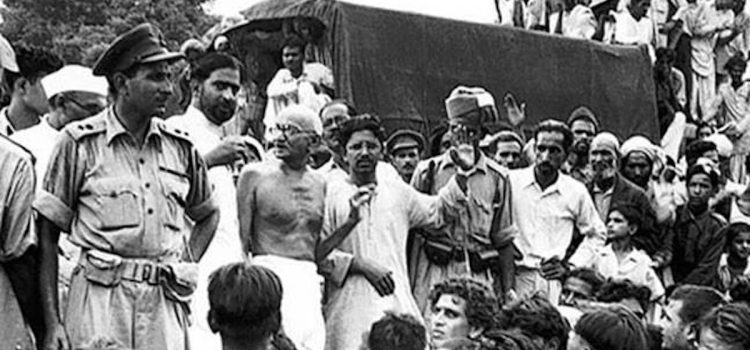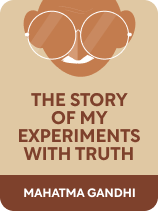

This article is an excerpt from the Shortform book guide to "The Story of My Experiments with Truth" by Mahatma Gandhi. Shortform has the world's best summaries and analyses of books you should be reading.
Like this article? Sign up for a free trial here.
What was the Champaran Satyagraha? How did it help solidify Gandhi’s role in India’s independence movement?
Gandhi’s first Satyagraha campaign in India took place in Champaran in 1917. It addressed the exploitation of indigo farmers by British planters. The peaceful resistance strategy involved investigation, civil disobedience, and providing essential services to the community.
Read on to discover how Mahatma Gandhi’s Champaran Satyagraha became a turning point in India’s struggle for freedom.
Mahatma Gandhi & the Champaran Satyagraha
Mahatma Gandhi’s Champaran Satyagraha was the first of several campaigns. He established the Satyagraha movement as a form of peaceful opposition to British colonial rule in India. The term “Satyagraha” combines two Sanskrit words: “sat” (truth) and “agraha” (insistence or firmness). This philosophy advocated for confronting unjust or unethical circumstances through non-violent means. Gandhi’s approach primarily involved civil disobedience, encouraging people to break laws in a manner that avoided causing harm or putting others at risk. This peaceful resistance strategy became a powerful tool in India’s struggle against oppression by the British Empire.
In 1917, Gandhi conducted his first satyagraha campaign in India. He met Rajkumar Shukla, a farmer from the Champaran region who shared that the British indigo planters were exploiting them. Gandhi was initially hesitant to take up the cause of the farmers who were forced by the planters to grow indigo on their land. He finally decided to travel to Champaran and conduct his investigation after much insistence from Shukla.
The Champaran Satyagraha involved different levels of nonviolent action. First, with his team of activists, Gandhi questioned hundreds of farmers to identify the injustices taking place. He also met with the planters to hear their side of the story and understand their needs. At the same time, he organized volunteers to provide education, medical care, and sanitation services for the farmers. (Shortform note: Gandhi learned through his inquiry that the farmers lacked access to basic services, and he believed that their lack of education allowed the British planters to treat them unfairly. To him, providing those basic services was part of the broader struggle for liberation.)
Many planters weren’t happy with Gandhi’s investigation, and they lobbied the government to pressure Gandhi to leave Champaran. He refused to leave unless the government began an official investigation into the farmers’ complaints. Gandhi continued his inquiry despite opposition and faced a court summons for violating an order to stop the investigation. Gandhi’s trial marked the first instance of civil disobedience—the refusal to comply with unfair laws—in the country and increased his popularity among the peasants.
Finally, the governor instituted a committee to investigate and invited Gandhi to be a member. The committee’s findings favored the farmers, and the abusive system the planters had used until then was abolished. This victory cemented Gandhi’s stance as a national leader.
(Shortform note: Gandhi might not have grown into the role of nationwide leader if not for Rajkumar Shukla and many other local leaders. Shukla convinced Gandhi to help and organized the resistance movement in Champaran, along with other local activists. They also mobilized villagers to protest when he was put on trial. Perhaps the most dramatic example is that of a cook named Battakh Miyan. When Miyan’s boss, a wealthy indigo planter who was unhappy about Gandhi’s investigation, ordered Miyan to put poison in Gandhi’s food, he alerted the Mahatma. He saved Gandhi’s life, but Miyan’s family was attacked and he was sent to prison.)

———End of Preview———
Like what you just read? Read the rest of the world's best book summary and analysis of Mahatma Gandhi's "The Story of My Experiments with Truth" at Shortform.
Here's what you'll find in our full The Story of My Experiments with Truth summary:
- Gandhi’s life story from childhood until adulthood
- How Gandhi became a world-famous activist
- A look at Gandhi’s commitment to a nonviolent, austere lifestyle






